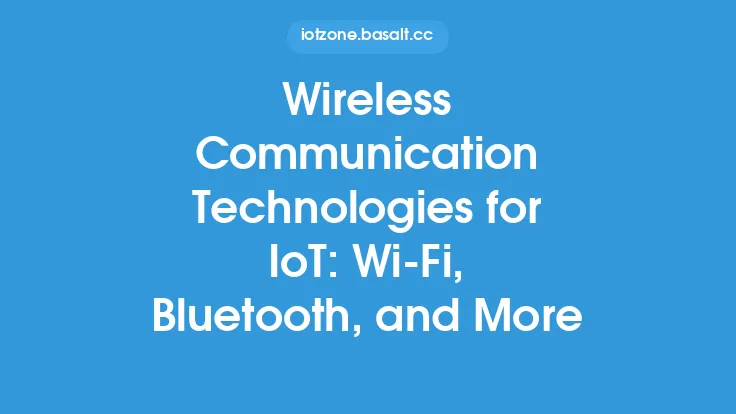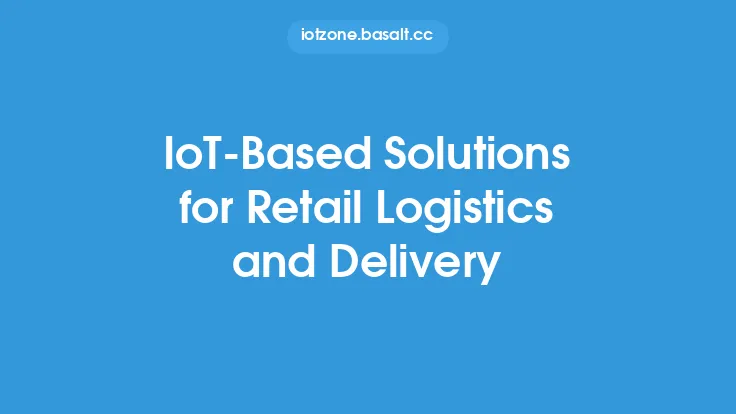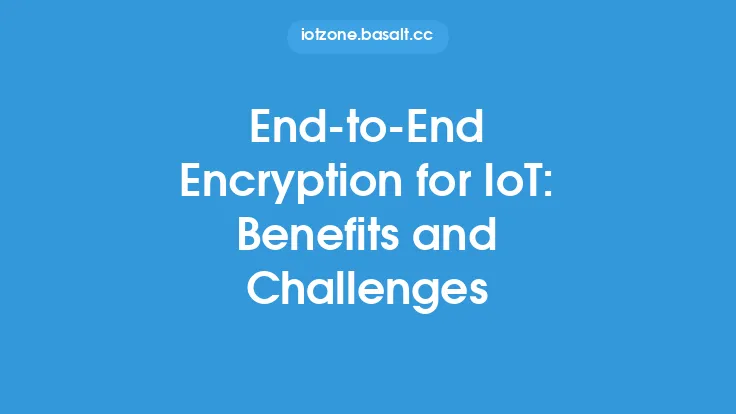The Internet of Things (IoT) has revolutionized the way we live and work, with an ever-increasing number of devices being connected to the internet. As the IoT continues to grow, the need for reliable, efficient, and cost-effective connectivity solutions has become more pressing. Low-Power Wide-Area Networks (LPWANs) have emerged as a key technology for IoT connectivity, offering a range of benefits including low power consumption, wide coverage, and low costs. In this article, we will delve into the world of LPWAN technologies, focusing on Sigfox, LoRaWAN, and NB-IoT, and explore their characteristics, advantages, and use cases.
Introduction to LPWAN Technologies
LPWAN technologies are designed to provide wireless connectivity for devices that require low bandwidth and low power consumption. These technologies are ideal for IoT applications where devices are often battery-powered and need to communicate small amounts of data over long distances. LPWANs operate on unlicensed or licensed frequency bands, depending on the technology, and offer a range of benefits including low costs, low power consumption, and wide coverage. The three most popular LPWAN technologies are Sigfox, LoRaWAN, and NB-IoT, each with its own strengths and weaknesses.
Sigfox Technology
Sigfox is a proprietary LPWAN technology that operates on the unlicensed frequency band. It uses a ultra-narrowband (UNB) modulation technique to transmit data at a very low rate, typically around 100 bps. Sigfox is designed for low-power, low-data-rate applications, making it ideal for IoT devices that require infrequent communication. The technology uses a star topology, where devices communicate directly with a base station, which then forwards the data to the cloud or a central server. Sigfox has a wide range of applications, including smart metering, logistics tracking, and industrial automation. One of the key advantages of Sigfox is its low power consumption, which allows devices to run for up to 20 years on a single battery.
LoRaWAN Technology
LoRaWAN is an open-standard LPWAN technology that operates on the unlicensed frequency band. It uses a chirp spread spectrum (CSS) modulation technique to transmit data at a higher rate than Sigfox, typically around 50 kbps. LoRaWAN is designed for low-power, low-data-rate applications, making it ideal for IoT devices that require more frequent communication. The technology uses a star topology, where devices communicate directly with a base station, which then forwards the data to the cloud or a central server. LoRaWAN has a wide range of applications, including smart cities, industrial automation, and agricultural monitoring. One of the key advantages of LoRaWAN is its flexibility, which allows it to be used in a variety of applications and environments.
NB-IoT Technology
NB-IoT (Narrowband Internet of Things) is a cellular LPWAN technology that operates on the licensed frequency band. It uses a narrowband modulation technique to transmit data at a low rate, typically around 27 kbps. NB-IoT is designed for low-power, low-data-rate applications, making it ideal for IoT devices that require reliable and secure communication. The technology uses a cellular topology, where devices communicate directly with a base station, which then forwards the data to the cloud or a central server. NB-IoT has a wide range of applications, including smart metering, logistics tracking, and industrial automation. One of the key advantages of NB-IoT is its reliability, which allows it to be used in mission-critical applications.
Comparison of LPWAN Technologies
Each of the LPWAN technologies has its own strengths and weaknesses, making them suitable for different applications and use cases. Sigfox is ideal for low-power, low-data-rate applications, while LoRaWAN is more flexible and can be used in a variety of applications. NB-IoT is more reliable and secure, making it suitable for mission-critical applications. The choice of LPWAN technology depends on the specific requirements of the application, including data rate, power consumption, and range.
Use Cases for LPWAN Technologies
LPWAN technologies have a wide range of applications, including smart metering, logistics tracking, industrial automation, and agricultural monitoring. They are also used in smart cities, where they can be used to monitor and manage traffic, energy usage, and waste management. In addition, LPWAN technologies are used in healthcare, where they can be used to monitor patients and track medical equipment. The use cases for LPWAN technologies are vast and varied, and they are expected to play a key role in the growth and development of the IoT.
Challenges and Limitations of LPWAN Technologies
While LPWAN technologies offer a range of benefits, they also have some challenges and limitations. One of the key challenges is interference, which can affect the reliability and performance of the technology. In addition, LPWAN technologies have limited data rates and range, which can limit their use in certain applications. Security is also a concern, as LPWAN technologies can be vulnerable to hacking and other cyber threats. Finally, the lack of standardization and interoperability between different LPWAN technologies can make it difficult to integrate them into existing systems and applications.
Future of LPWAN Technologies
The future of LPWAN technologies is bright, with a growing demand for low-power, low-data-rate connectivity solutions. The development of new technologies, such as 5G and edge computing, is expected to further enhance the capabilities of LPWAN technologies. In addition, the growth of the IoT is expected to drive the adoption of LPWAN technologies, as more and more devices are connected to the internet. However, the future of LPWAN technologies also depends on the ability of manufacturers and service providers to address the challenges and limitations of the technology, including interference, security, and standardization.
Conclusion
LPWAN technologies, including Sigfox, LoRaWAN, and NB-IoT, are playing a key role in the growth and development of the IoT. They offer a range of benefits, including low power consumption, wide coverage, and low costs, making them ideal for low-data-rate applications. While they have some challenges and limitations, the future of LPWAN technologies is bright, with a growing demand for low-power, low-data-rate connectivity solutions. As the IoT continues to grow and evolve, LPWAN technologies are expected to play an increasingly important role in enabling the connectivity and communication of devices.





